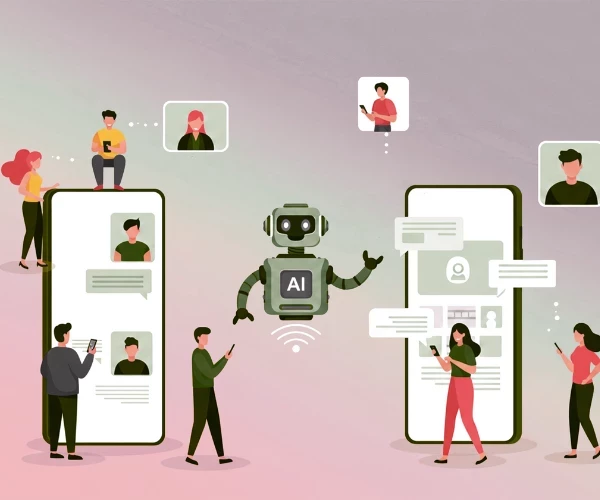Keep Users Engaged in Online Training with These Eight Tips for Trainers and Learners
Add bookmarkIn the past few years there’s been a renaissance in new methods for corporate training, as online training and collaboration technologies have matured. Companies now have many tools at their disposal to help keep pace with training requirements for both industry compliance and customer needs.
Live classroom training continues to be popular, yet more than 25 percent of training hours are delivered through online or computer-based technologies today, according to Training Magazine’s 2013 industry report.
Companies gravitate to online training, whether they use a WebEx type of service or an eLearning platform, because it is significantly cheaper and more flexible than classroom training and more viable for delivering training to a geographically dispersed workforce. Companies are also finding that they can better track and report on student progress through online training tools.
There are, however, drawbacks with online training. Seventy percent of communication by learners is non-verbal, which is easy for an instructor to identify during live classroom training, but much more difficult with online courses.
Training managers sometimes struggle to understand if employees paid attention and comprehended material during a course. Non-verbal feedback is a critical part of measuring success, and can also help instructors quickly improve content to achieve higher knowledge retention.
Acknowledging the issue with learner feedback, online training developers are working on how to incorporate non-verbal feedback into their programs. One concept in early use now is responsive technology, which closely tracks a user’s behavior.
Mindflash’s Focus Assist technology, for example, pauses when a user looks away for a few seconds. With these feature users don’t miss a beat and trainers know exactly how long users are engaged in a course.
Typically, an instructor can log into the software and see that the user began the course at a certain time and logged out at a certain time. But they really have no idea if the user was actually watching the course or multitasking, or even if the user stepped away from his or her desk altogether.
With responsive technology, the course only records "engagement time" as the time in which the user is looking at the screen. While not perfect (people can have their eyes on the screen and still be zoning out), responsive technology enables a more accurate measure of user engagement and course success. If trainers add quizzes and surveys, they can obtain a comprehensive picture of content absorption.
Responsive technology that measures user engagement is just the beginning of introducing non-verbal feedback in online courses; in time, trainers will have access to more detailed information about where a user lost focus in the course and even why. The end goal of these technologies, of course, is to increase user knowledge and further learning objectives. We’ve compiled a few additional tips to ensure online training success:
For Learners
1. Pick a slow time of day to take the online course. By nature, online learning invites more distractions than a closed classroom, since users are taking the course from their computer at work or at home where colleagues and family members drop in without a moment’s notice. Choose a time of day where you know that you can focus and avoid disruptions, such as early or late in the day. To be safe, shut down email and social media networks that might steal your attention with pop-up messages.
2. Block off time on your calendar. Make sure that colleagues know that you cannot be interrupted so that they don’t call you or double book your time while you are taking the course.
3. Go to a quiet place to take the course. It’s tempting to take a course while watching the playoffs or preparing lasagna, but don’t. Go to your home office and lock the door or book a conference room at the office.
4. Know your limits. If you’re worried about your ability to focus for 30 minutes or an hour, take the course in small chunks. Training managers should also consider designing courses that aren’t longer than 15 minutes or are divided into chapters, so the user can easily take a break when needed.
5. Take notes. Pretend that you are in high school physics and the teacher is watching you like a hawk during the lecture. Use a pad of paper or your tablet, and take notes during the course. This will help reinforce the content and minimize mental distraction.
For Trainers
1. Design courses that are entertaining. There’s nothing worse than clicking through a series of narrated slides. Encourage course designers to make full use of interactive technology by including video segments, animation, and quizzes. The more variety you can include in your content — with compelling graphics, music or special effects — the more likely that people will pay attention and learn the material. Of course you can go overboard and create a course that’s too busy: Check out these tips for more advice.
2. Encourage active participation. Design in opportunities where the user can pause the course and practice what they’ve learned. This is particularly useful for tactical topics, such as learning a new software tool, but could also apply to practicing a new sales methodology or pitch.
3. Keep each course short. People are more likely to start and complete a course if they think they can get it done. Mindflash data indicates that courses with fewe than 15 slides have a 25 percent higher completion rate than longer courses. If you are covering content that requires learners to spend more than 15 minutes in front of their screen, see if you can break into a series of courses. This will get more people to start and give them a sense of progress and accomplishment as they complete each course in the series.
Randhir Vieira is vice president of product and marketing at Mindflash.































